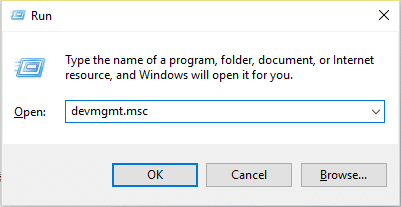The risk of data corruption or loss is real, as the data which is temporarily stored on the RAM might get lost in case of power or system failure before the data is flushed by writing it to the disk. To better understand how Disk Write Caching works consider this example, suppose you want to save a text file on the desktop when you click Save, Windows will temporarily save the information that you want to save the file on the disk into RAM and later Windows will write this file to hard disk. Once the file is written to the disk, the cache will send an acknowledgement to Windows and after which the information from the RAM will be flushed. Disk Write Caching doesn’t actually write the data to the disk it sometimes occurs after but Disk Write Caching is only the messenger. So now you are aware of the advantages and risk associated with using Disk Write Caching. So without wasting any time let’s see How to Enable or Disable Disk Write Caching in Windows 10 with the help of the below-listed tutorial.
Enable or Disable Disk Write Caching in Windows 10
Make sure to create a restore point just in case something goes wrong.
Enable or Disable Disk Write Caching in Windows 10 Method 1: Enable Disk Write Caching in Windows 10 Method 2: Disable Disk Write Caching in Windows 10
Method 1: Enable Disk Write Caching in Windows 10
Press Windows Key + R then type devmgmt.msc and hit Enter.
Expand Disk drives, then double-click on the disk drive you want to enable the Disk Write Caching. Note: Or you can right-click on the same drive and select Properties.
Make sure to switch to Policies tab then checkmark “Enable write caching on the device” and click OK.
Note: Check or uncheck “Turn off Windows write-cache buffer flushing on the device” under Write-caching policy according to your choice. But to prevent data loss, do not checkmark this policy unless you have a separate power supply (ex: UPS) connected to your device.
- Click on Yes to reboot your PC to save changes.
Method 2: Disable Disk Write Caching in Windows 10
Press Windows Key + R then type devmgmt.msc and hit Enter.
Expand Disk drives, then double-click on the disk drive you want to enable the Disk Write Caching.
Make sure to switch to Policies tab then uncheck “Enable write caching on the device” and click OK.
Click Yes to confirm to restart your PC. Recommended:
How to Format a Disk or Drive in Windows 10 Set Disk Quota Limit and Warning Level in Windows 10 How to Convert GPT Disk to MBR Disk in Windows 10 Prevent Hard Disk from going to Sleep in Windows 10
That’s it you have successfully learned How to Enable or Disable Disk Write Caching in Windows 10 but if you still have any questions regarding this tutorial then feel free to ask them in the comment’s section.







